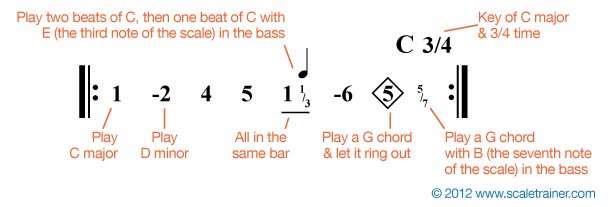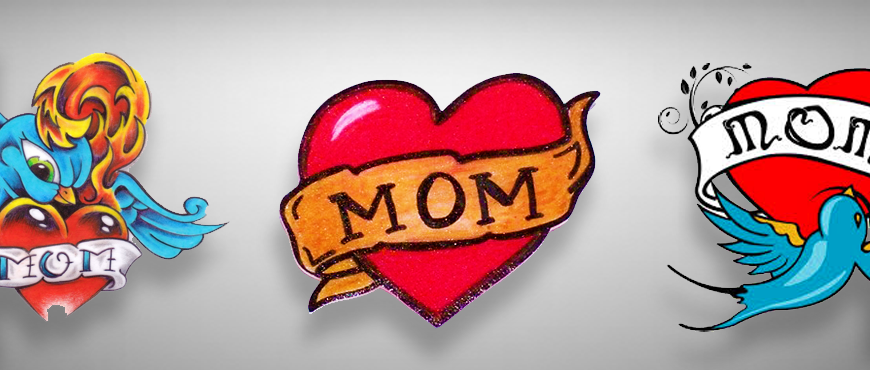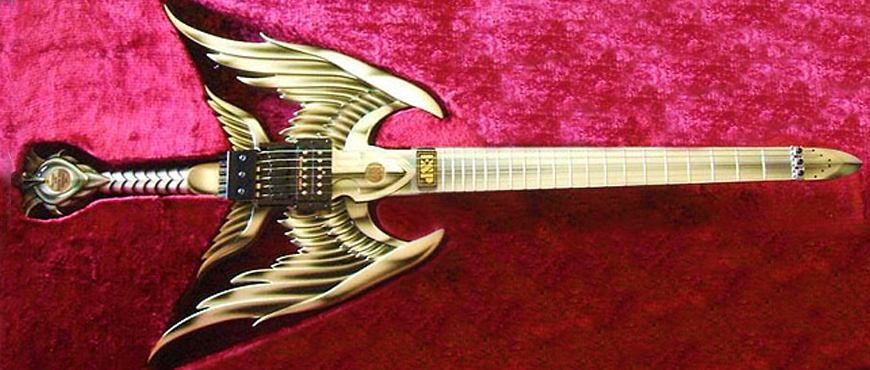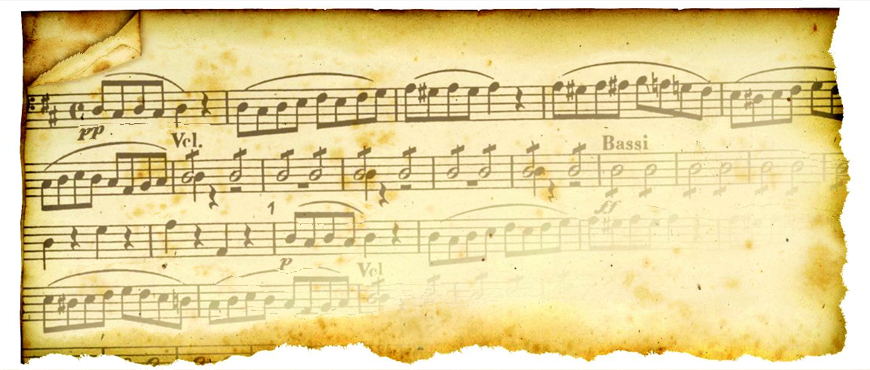
Chord Scale Theory
August 4, 2015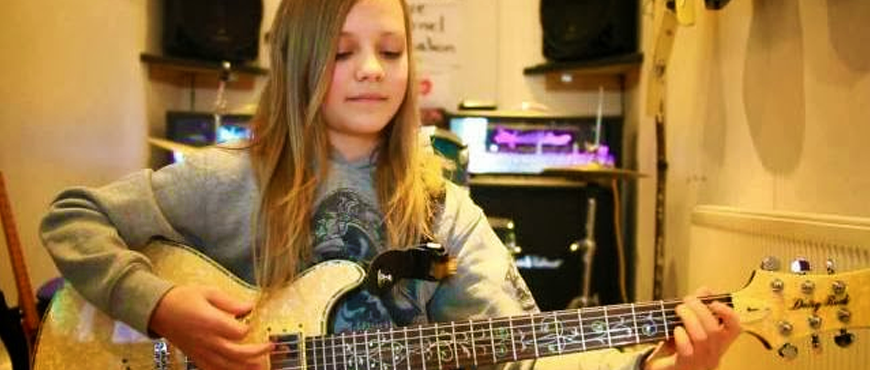
Play Guitar Like a Little Girl
August 4, 2015The Nashville Numbering System
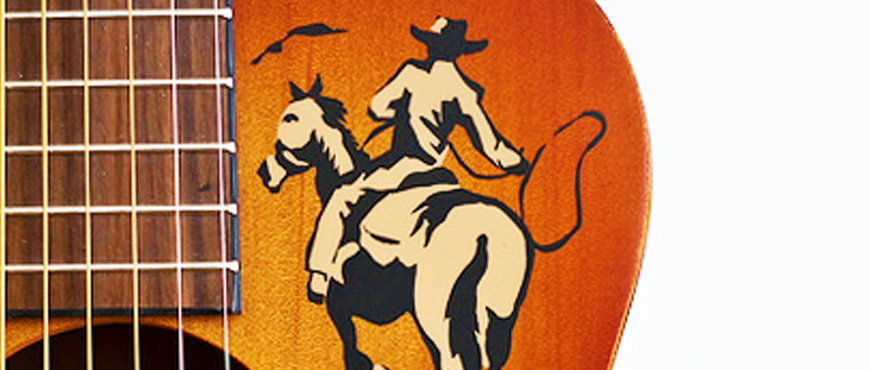
[lollum_dropcap]T[/lollum_dropcap]here is a handy trick to transpose, or change a song’s key that musicians use called the Nashville Numbering System.
It uses numbers in place of chord names which allows musicians to easily transpose a song without losing track of the relationship between each chord.
For example, below we apply this system to the diatonic chords of the C major scale and then transpose the key to F major.
The Nashville Numbering System in Action

Symbols are added to the Nashville Numbers to indicate how a chord should be strummed or to describe its tonality (major, minor, etc). Below are some common symbols you may come across.

A Progression using The Nashville Numbering System
Below is an example showing an eight bar progression written using the Nashville Numbering System.
With a little practice using the Nashville Numbers can become second nature and really save you a bunch of stress if you need to change the key of a tune due to a singer’s range restrictions. It’s also an easy way to jot down song ideas in a shorthand way.

